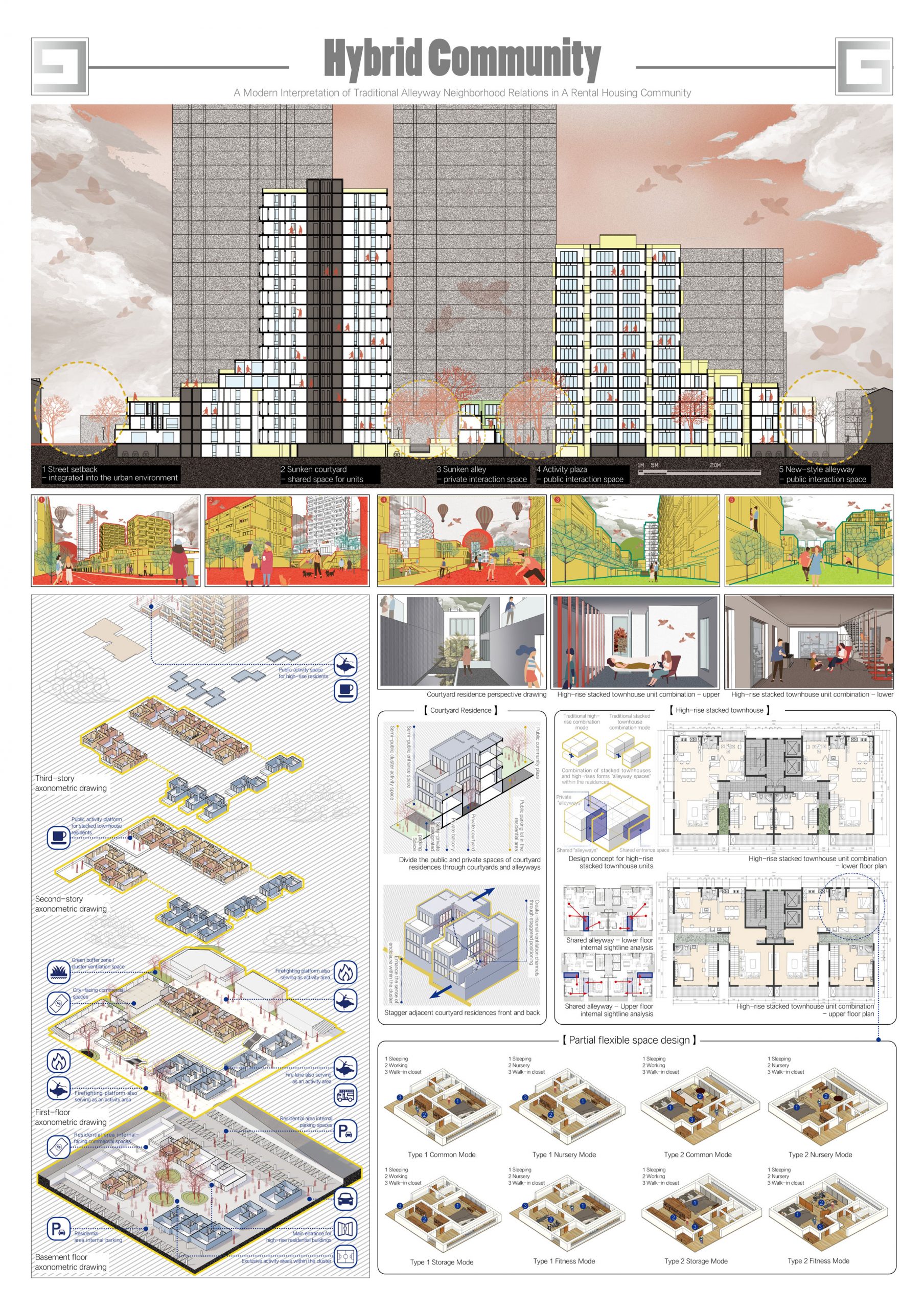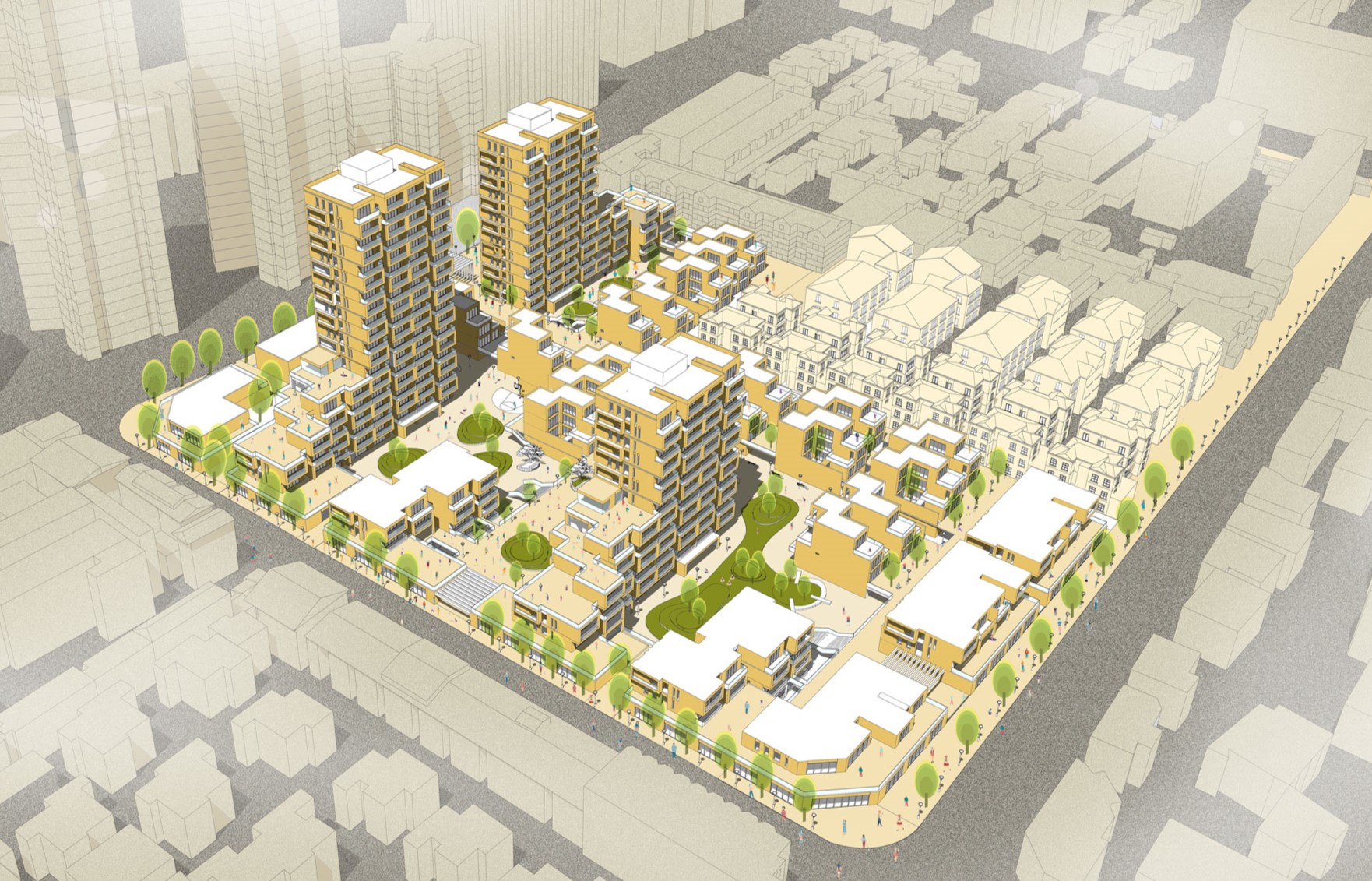With urban development, residents’ demands for housing have become increasingly stringent, and “housing prices” have become a heavy burden for young people. Consequently, “rental housing” has entered the market, favored by urban youth for its relatively low prices. This design aims to explore the possibilities of “future rental communities” in terms of public space and personal living. Additionally, due to the resurgence of the COVID-19 pandemic in Shanghai earlier this year, the design fully considers the impact of this black swan event on residential spaces and social interactions, striving to create a “healthy, livable, harmonious, and vibrant” future community.


The design is divided into four parts: business planning, urban design, residential area planning, and unit design. Each part thoroughly considers the needs of residents, surrounding communities, and original inhabitants, contemplating the possibilities of interaction and communication among different groups. We found that Shanghai’s traditional alleyway residences create a rich array of public spaces in high-density areas. Therefore, we aim to translate this spatial model into new activity spaces that meet modern housing needs. The proposal features a gradually cascading volume composed of street-level commerce, courtyard houses, stacked townhouses, and high-rises, forming three functional residential clusters that enclose the surrounding environment. Natural plazas and alleyway spaces are utilized for public activities and fire evacuation. Moreover, the combination of courtyard houses, stacked townhouses, and high-rises has been innovatively designed to provide as many activity spaces with varying levels of privacy or public access as possible within a relatively high-density community. Considering the composite functional requirements of rental housing and the potential for sudden home isolation in the post-pandemic era, we have incorporated flexible space designs to increase the diversity of living experiences in the community.

Leave a Reply